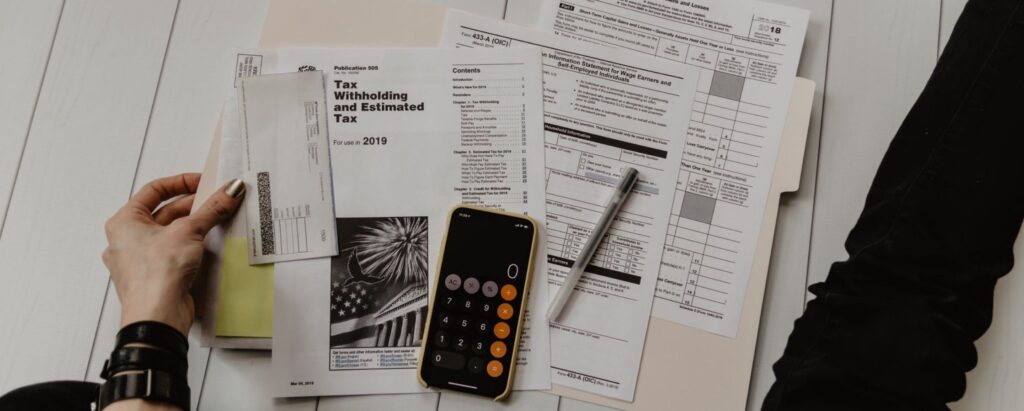Disclosure: This post may contain affiliate links. If you click on a link I may make a small commission at no extra cost to you. You can read the full disclosure here.
Last Updated on October 23, 2022 by Chris Panteli
How To Read a Budget
Making a budget is a great step forward to ensure responsibly managed finances. Whether you are a small business owner or freelancer, making a budget is essential.
Now that you’ve made a fantastic budget, what next?
Your next question should be how to read a budget effectively!
It doesn’t matter if you are presenting company finances to shareholders or scaling up your freelancing business. Reading the budget effectively will inspire confidence in your budgeting skills.
Another benefit of reading the budget effectively is that you can spot problems early. That way you can act to correct the budget before any issues become significant!
How To Read a Budget

Your operating budget may include lots of financial data. That’s because a great budget shows every cent of actual income and expenses. Three of the most important columns are:
- Predicted Spending
- Actual Spending
- Over/Under Budget
Feel free to call your budget columns anything you like, but these three will be essential in dictating your actions each fiscal year. Spending too much means cuts will be needed. If you spend less than expected that could mean there is money available to spend elsewhere.
Understanding these three columns means you know what to check in your annual budget data.
Predicted Spending
Planning for the year ahead will involve working out your predicted spending. If you are running a business you will know from previous years what you’ve spent on staff costs, stock, equipment, and anything else. Use these figures to predict the next year.
Should you adjust spending for inflation?
Using last year’s figures for predicted spending is a good guide, but it may not be a fixed cost. Inflation means the cost of most things goes up each year. You could leave the figures as they are or add a percentage to account for inflation.
One way to decide the increase is to look at the last few years of expenses and check the increase for each year. Now work out that percentage and add that to this year’s spending plans.
For example, in Year 1 your total spending was $10,000. Year 2 was $7,500. That’s an increase of $2,500 or approximately 33%. That means you could add $3,300 (33% of $10,000) to this year’s spending plans. Your total predicted spending is now $13,300.
Actual Spending
Actual spending is exactly as it sounds! In this column, you will find the exact figures for every expense.
You will have variable expenses and fixed expenses in every budget period. Recording all expenditures accurately helps ensure that any budget variances can be explained.
At the end of each fiscal year, monthly expenses can be checked against the budgeted amount. Checking these figures will help when producing the proposed budget for the next fiscal year.
Over/Under Budget
Checking the budget each month is important to make sure spending is on track. Running a successful business requires keeping a close eye on every cent spent.
The Over/Under column may also be called Variance, but is the same thing. This is the column that shows you whether you have gone over or under your budget.
If monthly expenses are over budget, what could this mean? It could mean costs have spiraled out of control – you now need to find out why. Is this a permanent increase? A one-off? Can the business manage the extra costs? Will costs need to be passed on to customers?
A budget that is underspending could be a problem too. Saving money is fantastic of course, but if the plan was to spend it this could indicate a problem. Is the project behind schedule? Are corners being cut?
Was the monthly income less than expected? This might mean invoices are unpaid and need chasing. Making sure all expected revenue is collected is just as important as checking the bills aren’t more than expected.
All these questions and more will need answering when your budget is over or under.
Things a Good Budget Should Include

A good budget will need to include every financial transaction. Amounts, dates, and the reason for the spending are the minimum pieces of data a good budget will include.
Income
Income from every source should be included in the budget. Accurate reporting is needed for both the IRS and so your budget shows accurate figures.
When reviewing the budget does the income match the amount expected? If less than expected, does this mean invoices are unpaid?
Checking the income column matches expected earnings is essential to spotting unpaid invoices. Making sure payments are received as scheduled is also essential for good cash flow management.
Expenses
Every single expense should be included in your budget. Small business owners and freelancers will need to include all costs associated with the business. This might include buying stock, equipment, paying staff, or renting premises.
You will also need to account for any debt repayment that needs paying. Credit card debt needs to be paid on time. Failure to pay could mean your credit score is ruined.
Businesses that don’t have an emergency fund to fall back on often rely on credit when cash flow is tight. A good credit score means you can get money in your bank account when needed. This means you can still pay suppliers, staff, or buy more stock when times are tough.
Other
Income and expenses are straightforward columns to understand. These are tangible costs that you can put a figure on and add to your budget. Sometimes though you have unknown or unexpected expenses that need to be included.
One-off costs are a good example of this. Furniture, new software, or other equipment may unexpectedly need purchasing during the year. If this is a one-off purchase, then add it to the Other column in your budget.
Unexpected expenses during the year will mean your proposed budget will vary from your final budget report. Recording these expenses means you can see on your financial statement why your net income is lower than expected.
How To Make an Effective Budget

Making an effective budget will follow a similar process whether you are a multi-million-dollar business or a freelancer looking to grow.
First, you must prepare the budget. Using specialized software like QuickBooks to do this is usually better than pen and paper! Choose an amazing budgeting tool from the many available online. Find one that works for you, and it takes away a lot of the arduous work.
When presenting a budget to others make sure to highlight key points. Predicted spending, actual spending, and over or under spending are areas that are often considered most important.
Visual aids often make budgets easier to understand. Use charts and graphs when presenting data to others or even just for yourself.
If there are any problems in the budget such as unexpected spending. Have answers ready for how these will be handled moving forward.
FAQs
What should I do if unusual amounts are showing for income or expenses?
If the figures don’t match up, this could mean previous estimates were too low or too high. However, if the difference is significant, then it could be a sign of fraudulent activity.
Make sure to check all differences of more than 10% to make sure anyone with access to the accounts isn’t stealing from your business.
I’m a freelancer, should I still make a budget?
Yes! Everyone should make a budget document as it’s the best way to achieve a financial goal, savings goal, and monitor spending habits.
As a freelancer, you may include living expenses as part of your financial planning. Make sure to make every section clear on your budget report so you know which monthly expenses are for personal finance and which are for your business budget.







